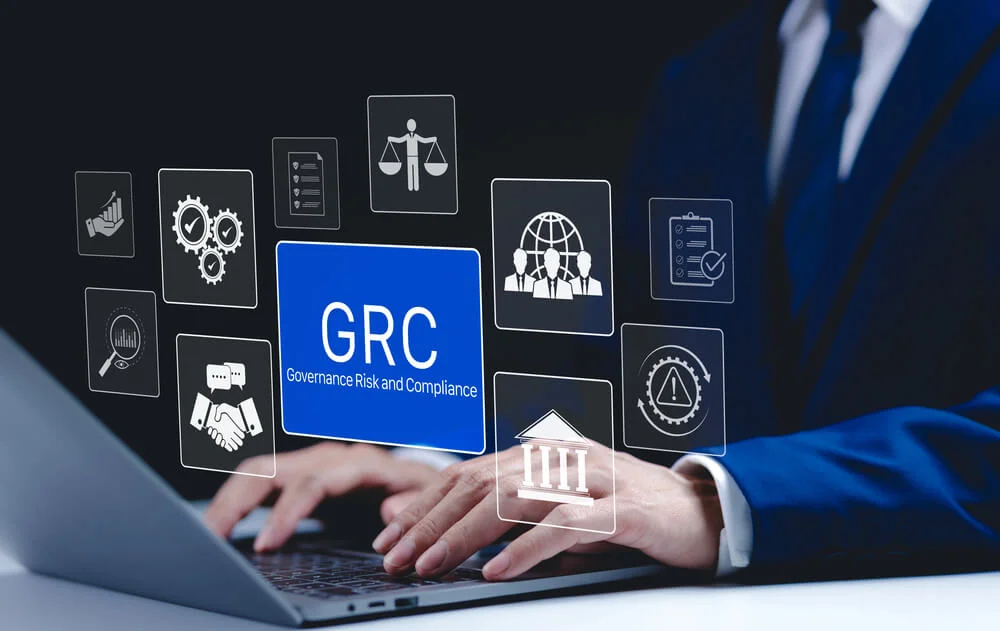Correcting Non-Compliance: Guide for Business Owners
Non-compliance in business refers to failing to adhere to laws, regulations, and internal policies. Businesses often find it most challenging to comply with financial reporting, health and safety, data protection, and labor laws. Correcting non-compliance is an important step in maintaining operational integrity, protecting your employees, and avoiding severe consequences.

Why Is Correcting Non-Compliance Important in the Business Environment?
Abiding by laws, regulations, and internal procedures ensures legal and ethical operations. Non-compliance can result in significant financial losses due to fines, sanctions, and the cost of legal battles, as well as consume valuable time and resources. Legal issues not only bring potential penalties but also impact a company’s profitability and long-term stability.
Furthermore, non-compliance risks losing the trust of customers, partners, and stakeholders. In today’s interconnected world, news of a company’s failure to comply spreads quickly. Rebuilding a tarnished reputation can be a lengthy and challenging process, further affecting the company’s stability and success.
How Can You Identify Non-Compliance in Your Organization?
Identifying non-compliance requires vigilance and proactive measures. Signs of potential issues include inconsistent financial records, employee grievances, and frequent regulatory queries.
Root Causes of Non-Compliance
The first step to identifying and correcting regulatory problems is to understand root causes that are universal across industries, including:
- Lack of Awareness: Employees and management may not know about the latest regulations or internal policies.
- Insufficient Resources: Limited financial or human resources can hinder the implementation of compliance measures.
- Inadequate Training: Without proper training, employees might not understand compliance requirements.
- Organizational Culture: A culture that does not emphasize compliance can lead to widespread issues.
- Evolving Regulations and Market Pressures: Rapid changes in laws and intense market competition can make compliance challenging.
Businesses must address these causes to ensure they operate within legal and ethical boundaries. Effective compliance mitigates risks, protects the company’s reputation, and ensures long-term sustainability.
What Strategies Can You Use To Address Non-Compliance?
Effectively addressing non-compliance requires a strategic approach that incorporates general and industry-specific strategies to stay on top of regulations and policies. For example, regular audits assess whether your company obeys current laws. These audits not only identify instances of non-compliance but also inform corrective actions, ensuring ongoing conformity and playing a crucial role in mitigating risks.
Implement Effective Training Programs
Training strategies can include interactive workshops to engage employees in real-world scenarios, online modules for flexible learning, and periodic updates on new regulations. Regular assessments and feedback sessions also help reinforce learning. These strategies ensure staff remain well-informed and skilled in navigating the complexities of compliance requirements.
Cultivating a Compliance-Focused Culture
Developing a culture capable of correcting non-compliance is essential. This involves integrating compliance-related goals into the company’s mission and values, and ensuring top management visibly supports and participates in compliance activities.
Regularly sharing success stories of effective compliance and recognizing employees who exemplify these values also helps to reinforce this culture. Additionally, creating open forums for discussing compliance issues and solutions encourages a transparent and proactive environment within the organization.
It’s not just about adhering to rules but about creating an environment where compliance is a routine part of daily operations. By prioritizing these strategies, companies can protect themselves against potential risks associated with non-compliance, thereby securing their reputation and operational stability.
Using Workflow Automation To Correct Non-Compliance
To effectively address non-compliance, businesses can benefit from a comprehensive suite of automated services offered by Compyl that align with various regulatory frameworks. These services streamline compliance processes and ensure an understanding of international standards and regulations. Some key frameworks you can add to Compyl’s workflow automation software include:
- SOC 2 Attestation: Demonstrates an organization’s commitment to protecting customer data, covering aspects like security, integrity, confidentiality, and privacy.
- ISO 27001 Certification: Validates the effectiveness of an organization’s Information Security Management System, building global trust.
- HIPAA Compliance: Essential for organizations handling health information to ensure appropriate safeguards to protect both staff and patients.
- GDPR Compliance: Required for companies processing personal data from individuals in the European Union.
- PCI Compliance: Key for organizations handling credit card information, ensuring secure financial transactions.
Leveraging these automated services not only ensures compliance with various regulatory requirements but also enhances an organization’s security and risk management posture. These services offer a customizable way to ensure business operations align perfectly with industry standards.
Maintaining Effective Compliance Solutions
To maintain effective compliance solutions, continuously evolve both training programs and the organizational culture. This involves periodically reviewing and updating training content to reflect the latest regulatory changes and industry best practices. Engaging in regular benchmarking against industry standards can highlight areas for improvement in training methodologies.
Encourage departments to set their own compliance goals and share best practices. Doing so promotes a sense of ownership and responsibility toward maintaining high compliance standards and is possible thanks to educational efforts.
Regularly revisiting and refreshing compliance core values in organizational communications also helps to keep the message fresh in employees’ minds. It requires no more than incorporating a compliance-centric element in every regular staff meeting.
How Do You Evaluate the Success of Your Compliance Effort?
To evaluate the success of compliance efforts, measure key performance indicators such as the number of compliance incidents, audit results, and employee training completion rates. Regularly review these metrics against set compliance goals. Additionally, solicit feedback from employees and stakeholders to assess the effectiveness of compliance policies and training. You could even review each department’s progress toward its goals and practices. This approach provides a clear picture of compliance efficacy and areas for enhancement.
Free Security Assessment Today
Where Can You Access Software for Correcting Non-Compliance?
For businesses seeking effective tools for correcting non-compliance, specialized software solutions are available through Compyl. These platforms offer streamlined processes, consistent monitoring, and comprehensive compliance management tailored to various regulatory standards. Ensuring your organization remains compliant has never been more accessible. To explore how these solutions can transform your compliance strategy and ensure your organization remains compliant, request a demo from Compyl. Take the first step toward efficient and reliable compliance management today!
FAQ's
Upon discovering a non-compliance issue, a company should first conduct a thorough investigation to understand the scope and root cause of the issue. This involves identifying which regulations have been violated and determining whether the non-compliance is due to systemic issues, human error, or technological failures. Immediate steps should include informing relevant regulatory bodies if required by law, as timely disclosure can sometimes mitigate penalties. The company should also communicate internally to ensure that all stakeholders are aware of the issue and the steps being taken to address it. Implementing temporary controls to prevent further non-compliance while a more permanent solution is developed is crucial. Then, the company should develop and execute a corrective action plan that addresses the root causes of the non-compliance to prevent recurrence. This plan may involve revising policies and procedures, enhancing training programs, or upgrading technology.
A company can measure the effectiveness of its compliance correction efforts through a variety of metrics and indicators. Key performance indicators (KPIs) related to compliance, such as the number of incidents of non-compliance, time to detect and resolve issues, and the results of internal audits and compliance assessments, can provide quantitative data on the effectiveness of corrections. Regular compliance audits, both internal and external, are crucial for assessing the adherence to regulatory requirements and the implementation of corrective actions. Feedback from employees through surveys and interviews can also offer insights into the cultural and procedural changes resulting from the correction efforts. Additionally, monitoring the response from regulatory bodies or external stakeholders to the corrective actions taken can provide validation of their effectiveness.
Technology plays a pivotal role in preventing future non-compliance by automating compliance processes, thereby reducing the likelihood of human error and increasing the efficiency and effectiveness of compliance programs. Effective tools include compliance management software that helps organizations track and manage their compliance obligations across different regulations and standards. Data encryption and secure access management tools are crucial for protecting sensitive information and ensuring access is granted only to authorized individuals, directly supporting compliance with regulations like GDPR and HIPAA. Automated monitoring and reporting tools can continually assess compliance status in real-time and alert management to potential issues before they become significant problems. Additionally, training platforms that offer dynamic, up-to-date content can help ensure that all employees are aware of their compliance responsibilities and the latest regulatory requirements.




